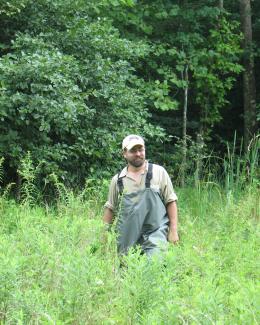Abstract
While recent reports demonstrate that the direct emission of methane from living tree trunks may be a significant terrestrial emission source, there has been debate whether tree emissions are due to transport from soils or produced in the wood environment itself. Reports of methanogens from wood of trees were prominent in the literature 40 years ago but have not been revisited with molecular ecology approaches.
We examined communities associated with Populus deltoides using rRNA gene sequence analyses and how these vary with tree and wood properties.
Our data indicate that wood environments are dominated by anaerobic microbiomes. Methanogens are prominent in heartwood (mean 34% relative abundance) compared to sapwood environments (13%), and dominant operational taxonomic units (OTUs) were classified as the Methanobacterium sp. Members of the Firmicutes phylum comprised 39% of total sequences and were in 42% greater abundance in sapwood over heartwood niches. Tree diameter was the strongest predictor of methanogen abundance, but wood moisture content and pH were also significant predictors of taxon abundance and overall community composition.
Unlike microbiomes of the soil, rhizosphere and phyllosphere, wood associated communities are shaped by unique environmental conditions and may be prominent and overlooked sources of methane emissions in temperate forest systems.



